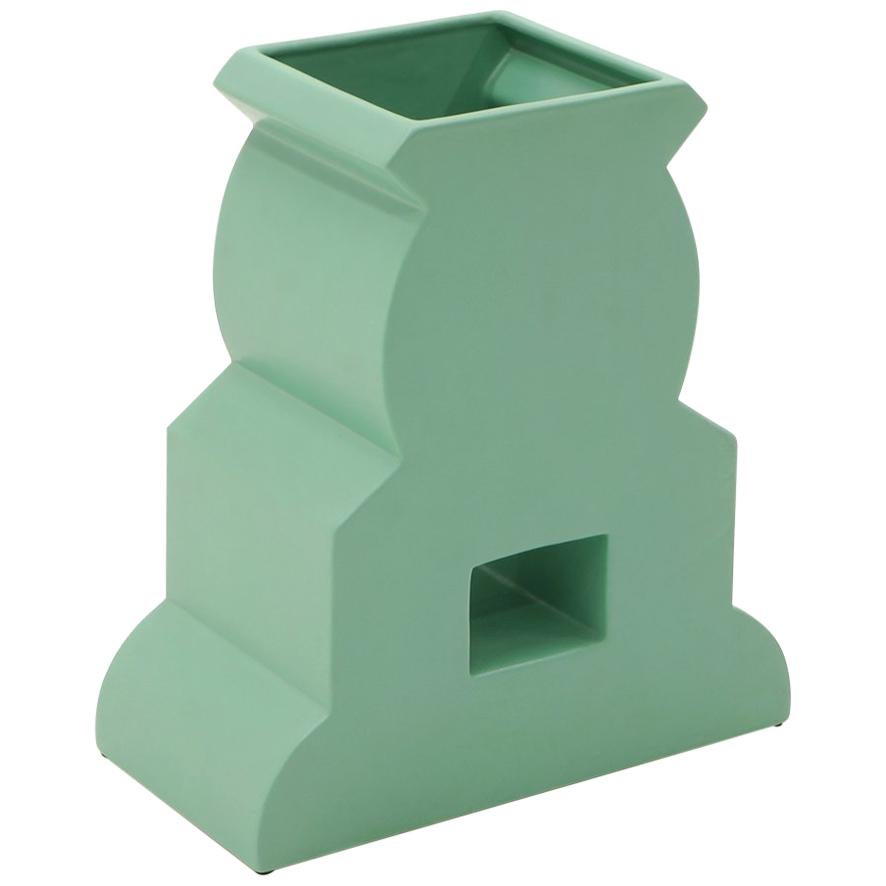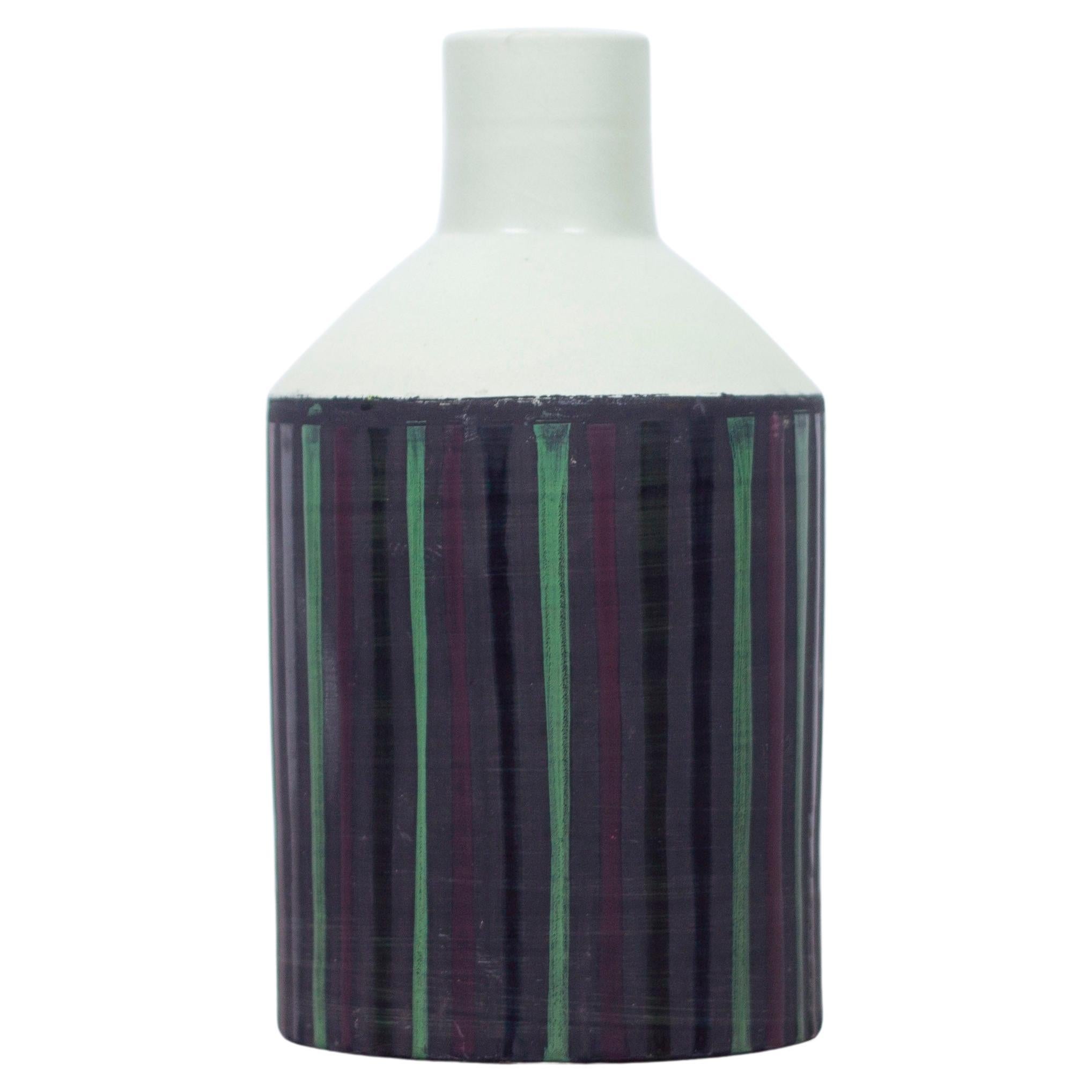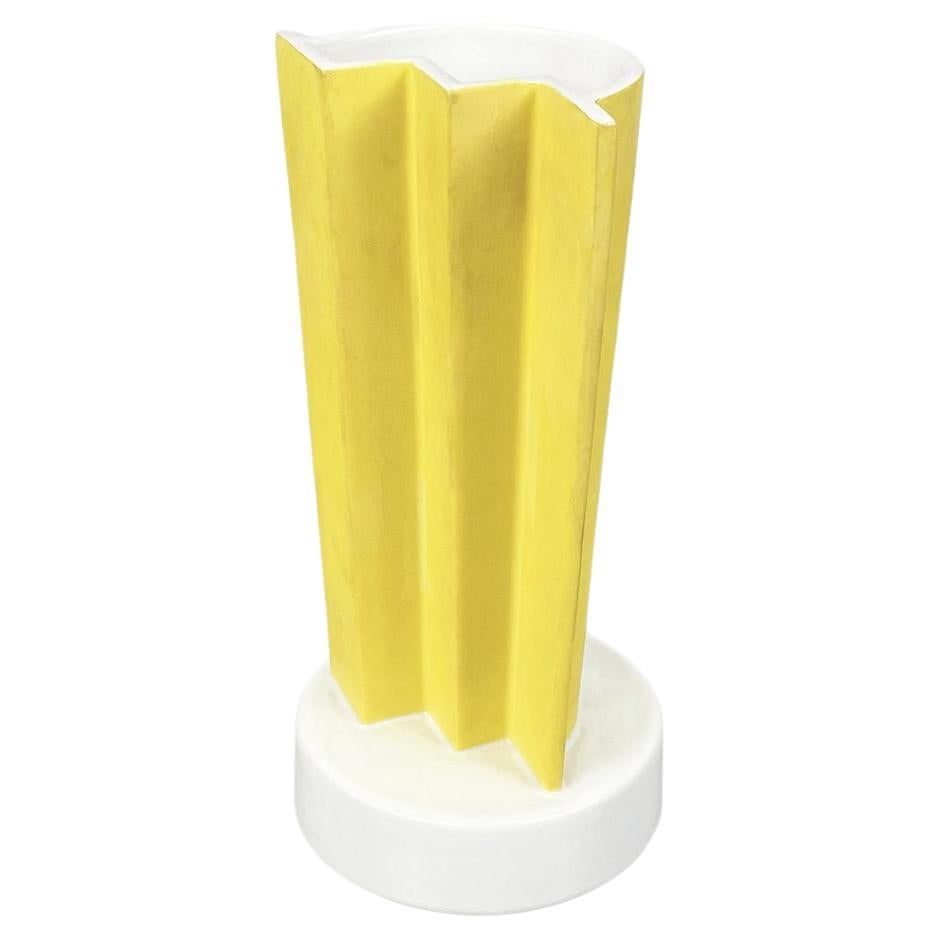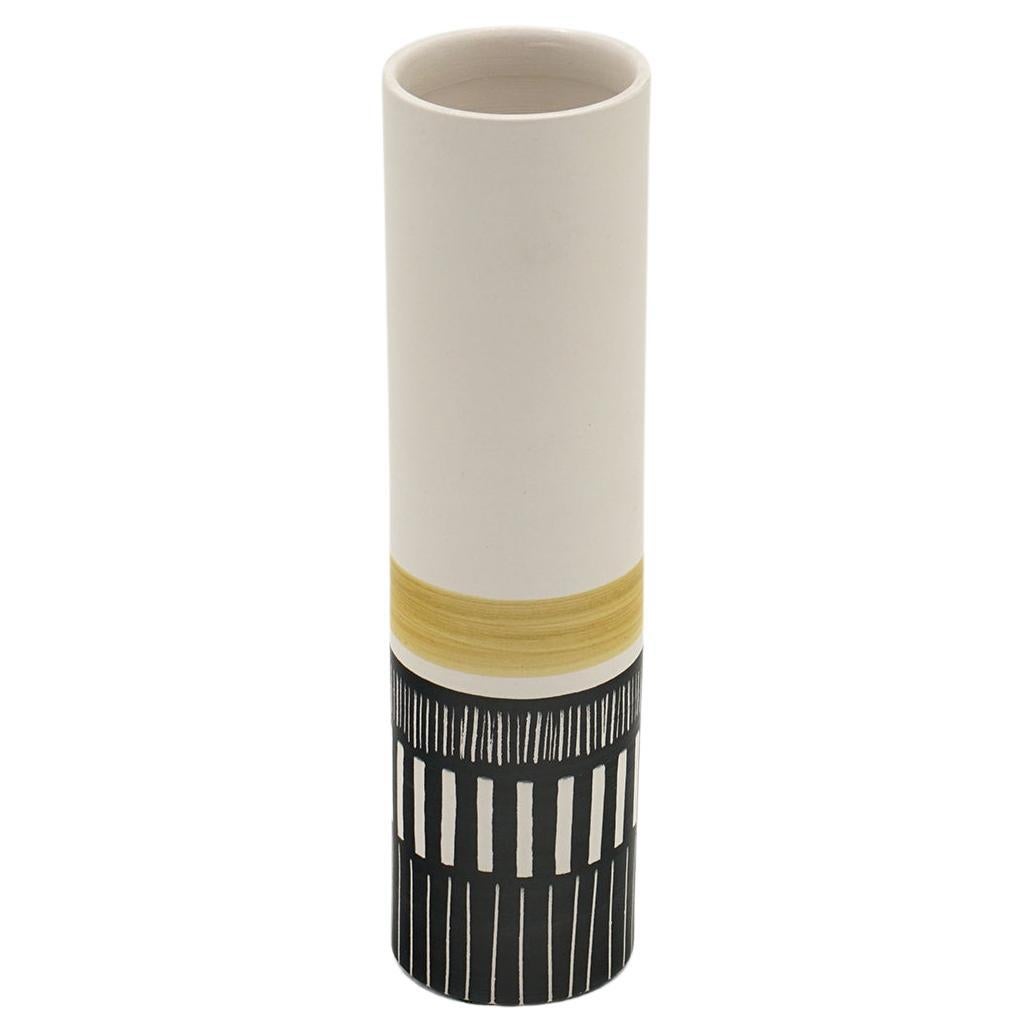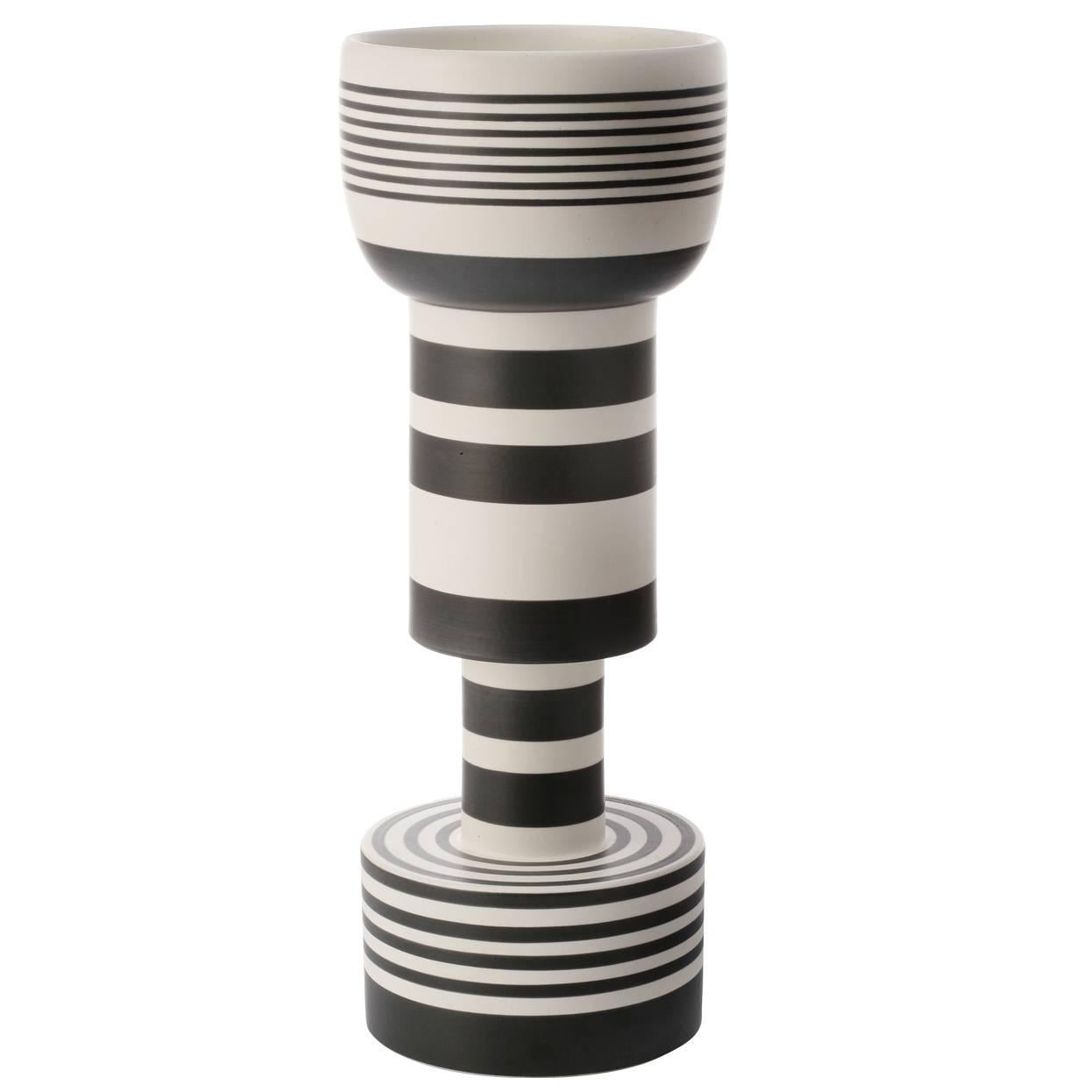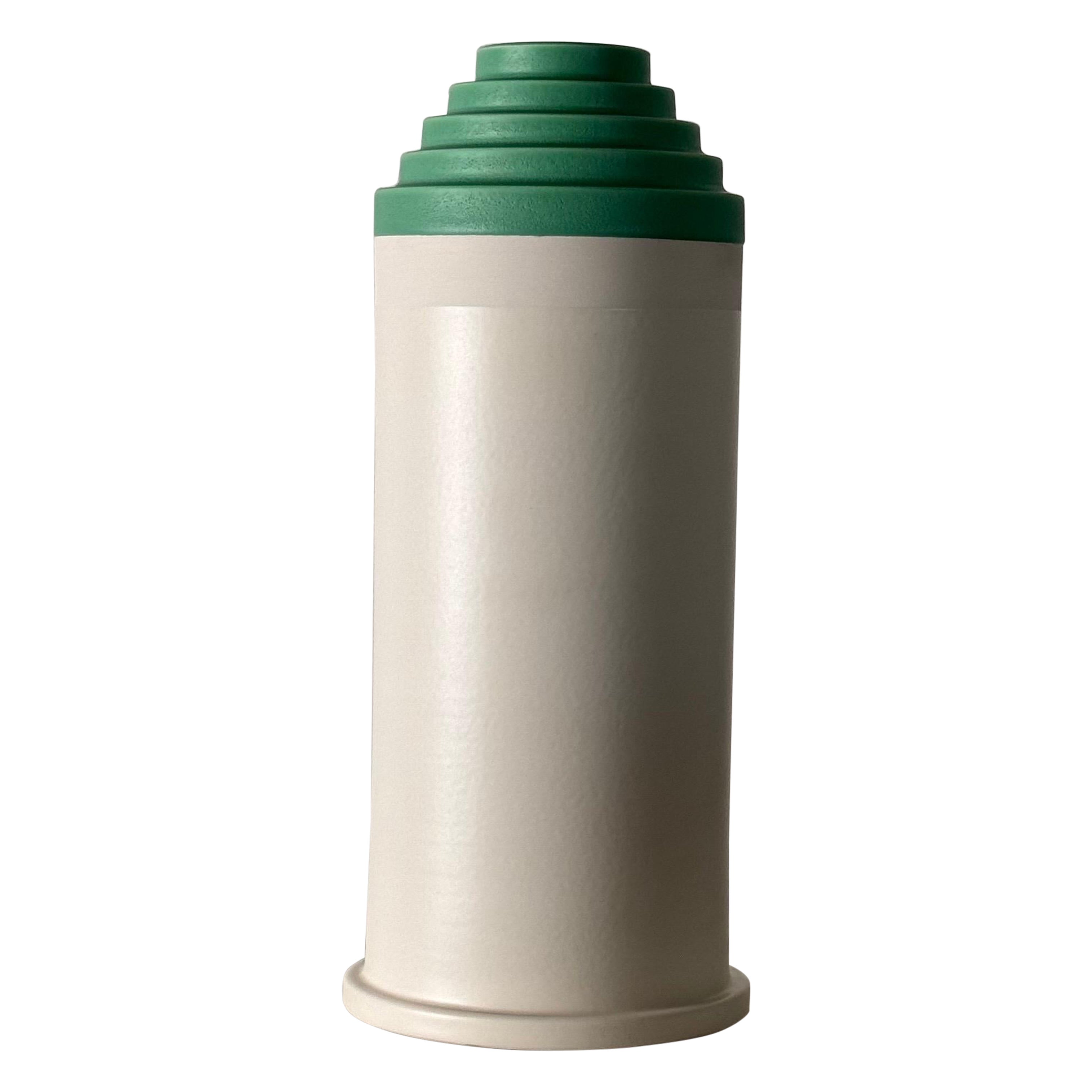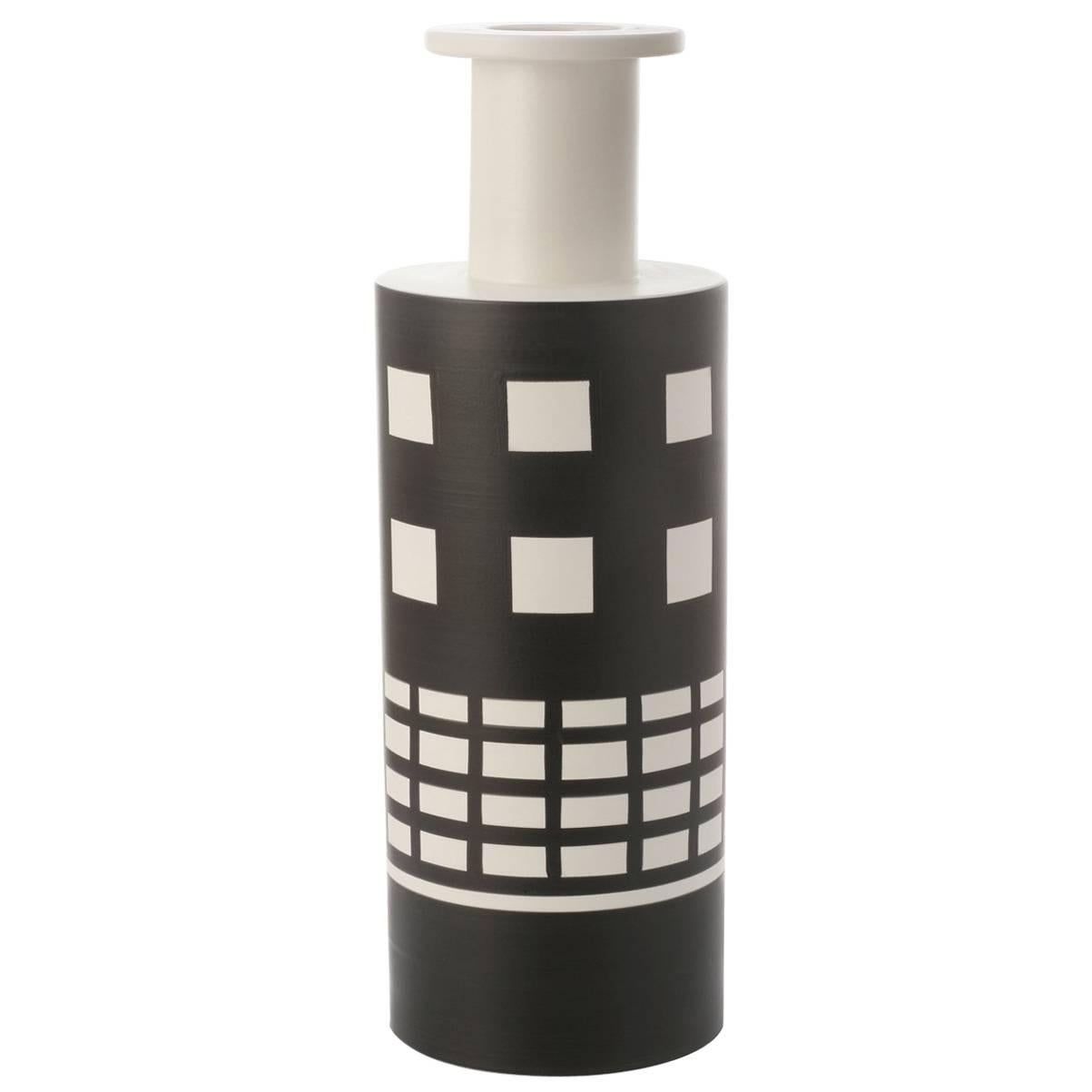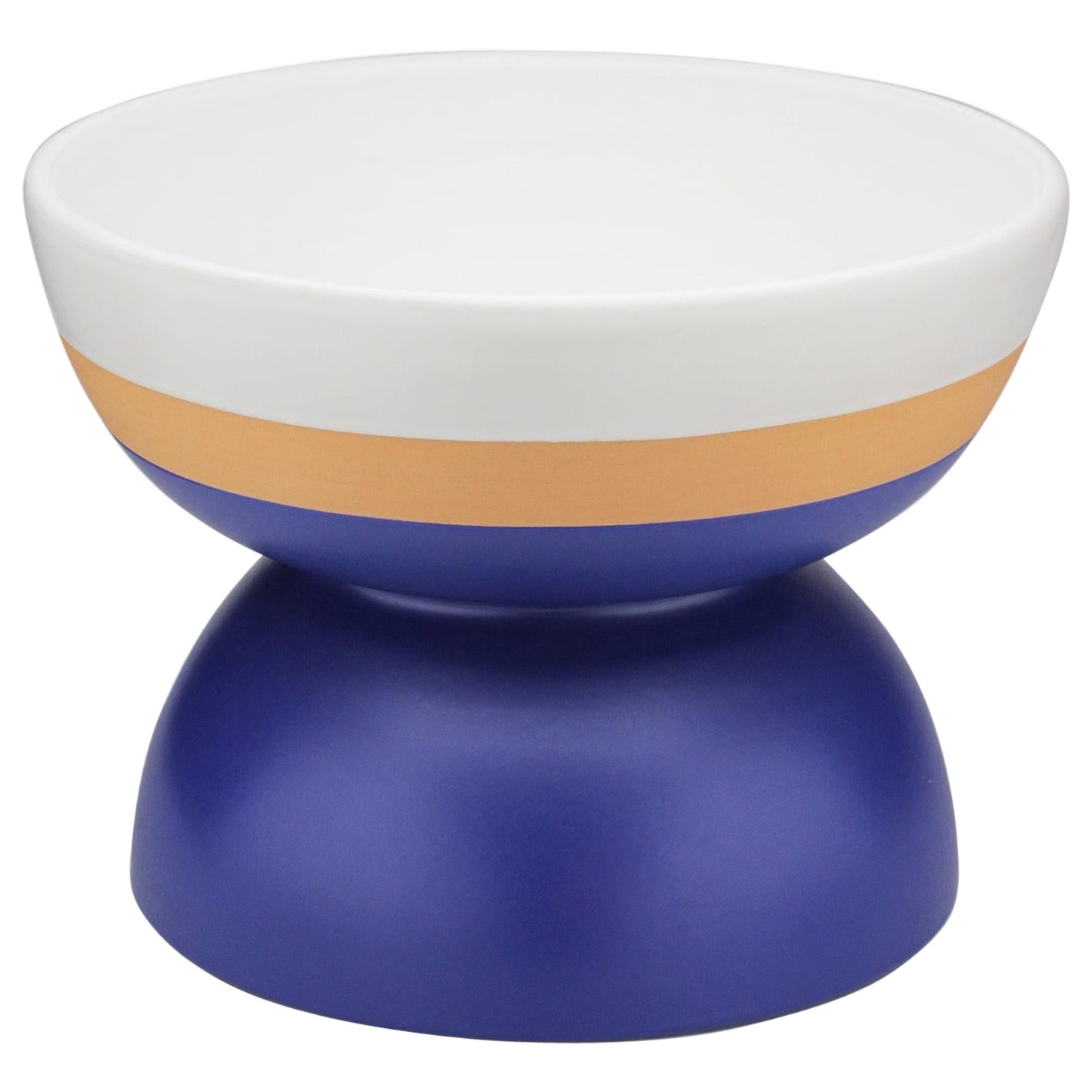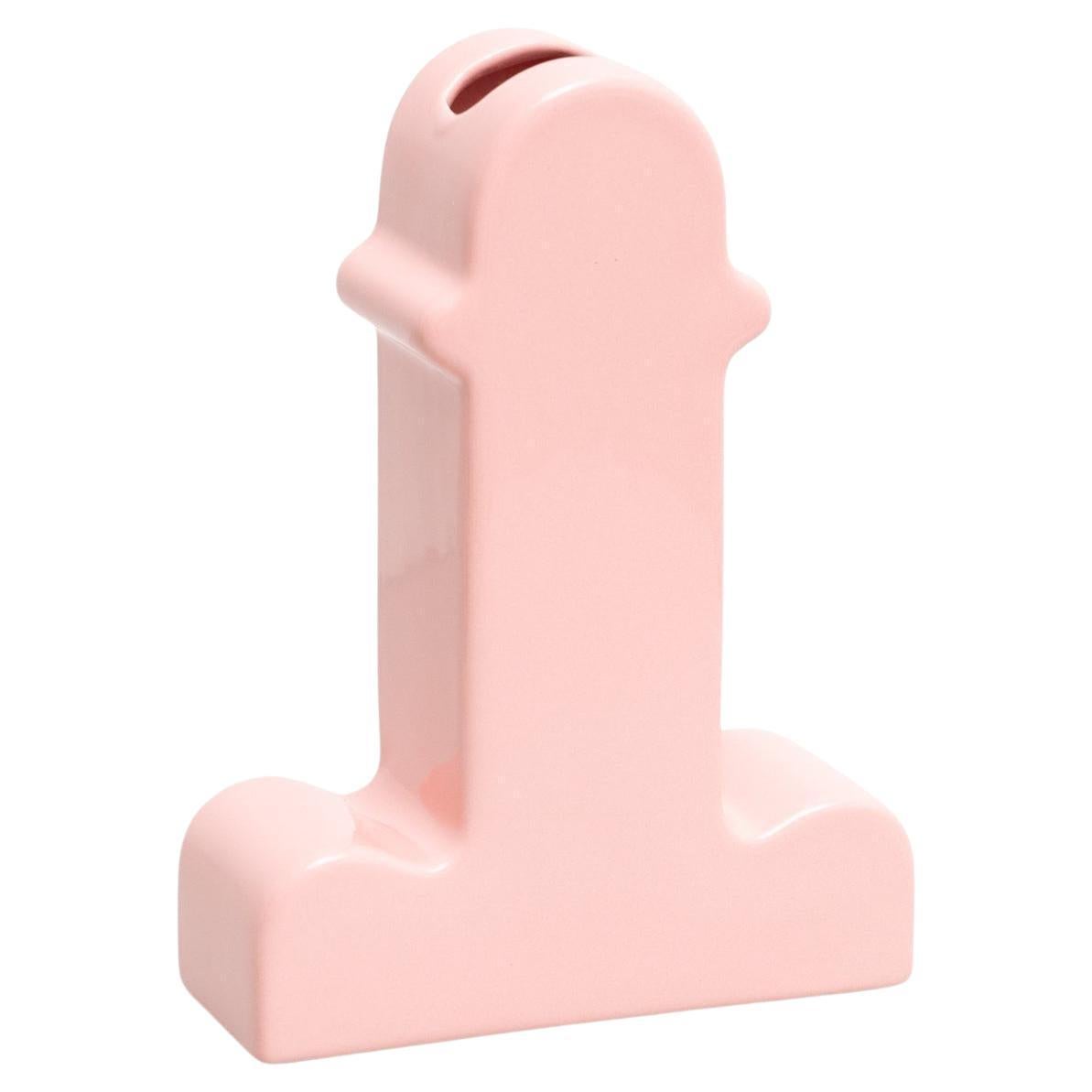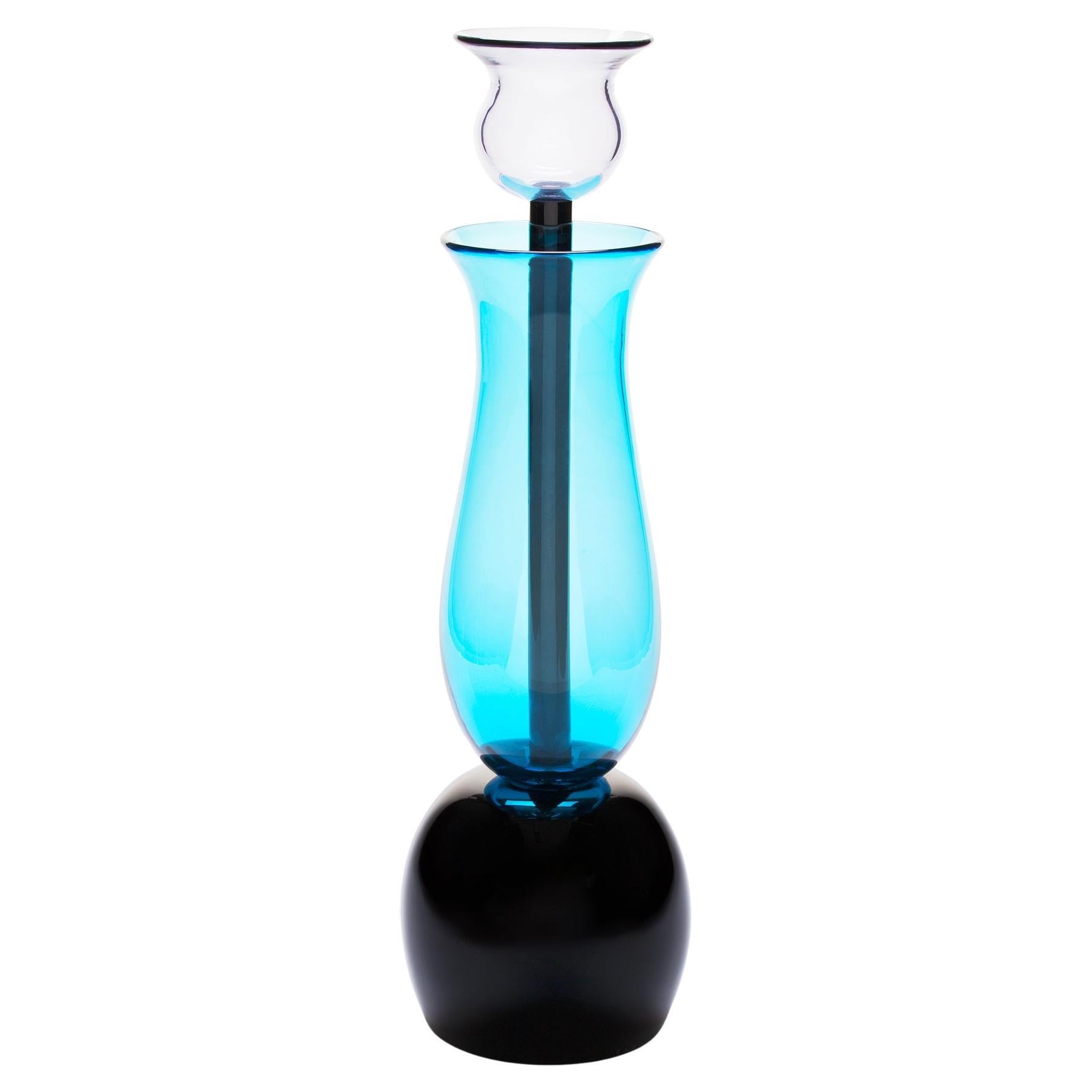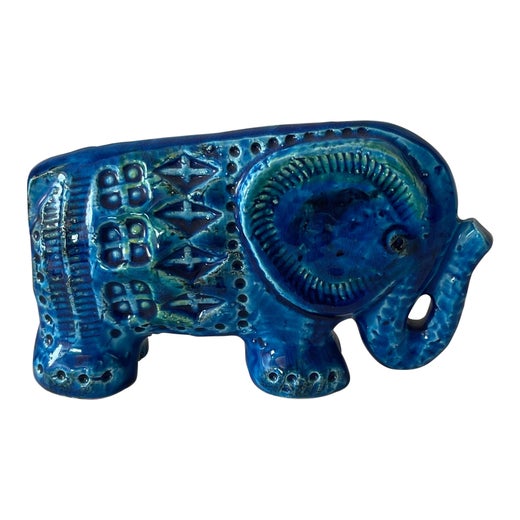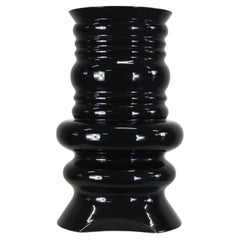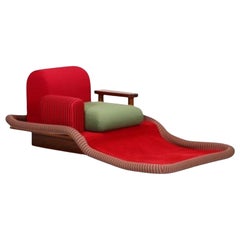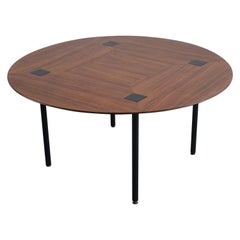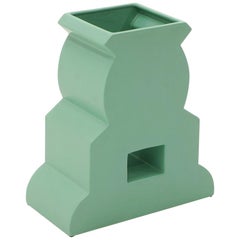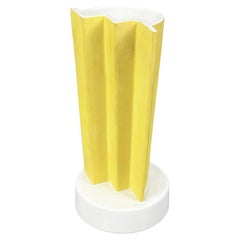
Ettore Sottsass Vase from Stepped Series in Enameled Ceramic by Bitossi 1990s
View Similar Items
Ettore Sottsass Vase from Stepped Series in Enameled Ceramic by Bitossi 1990s
About the Item
- Creator:Ettore Sottsass (Designer),Bitossi (Manufacturer)
- Dimensions:Height: 14.57 in (37 cm)Diameter: 5.52 in (14 cm)
- Style:Post-Modern (Of the Period)
- Materials and Techniques:Ceramic,Enameled
- Place of Origin:
- Period:
- Date of Manufacture:1980s
- Condition:Wear consistent with age and use.
- Seller Location:Montecatini Terme, IT
- Reference Number:1stDibs: LU5304238964132
Ettore Sottsass
An architect, industrial designer, philosopher and provocateur, Ettore Sottsass led a revolution in the aesthetics and technology of modern design in the late 20th century. He was a wild man of the Radical Design movement that swept Italy in the late 1960s and ’70s, rejecting rationalism and modernism in favor of ever-more outrageous imaginings in lighting and furniture such as mirrors, lamps, chairs and tables.
Sottsass was the oldest member of the Memphis Group — a design collective, formed in Milan in 1980, whose irreverent, spirited members included Alessandro Mendini, Michele de Lucchi, Michael Graves and Shiro Kuramata. All had grown disillusioned by the staid, black-and-brown “corporatized” modernism that had become endemic in the 1970s. Memphis (the name stemmed from the title of a Bob Dylan song) countered with bold, brash, colorful, yet quirkily minimal designs for furniture, glassware, ceramics and metalwork.
The Memphis Group mocked high-status by building furniture with inexpensive materials such as plastic laminates, decorated to resemble exotic finishes such as animal skins. Their work was both functional and — as intended — shocking.
Even as it preceded the Memphis Group's formal launch, Sottsass's iconic Ultrafragola mirror — in its conspicuously curved plastic shell and radical pops of pink neon — embodies many of the collective's postmodern ideals.
Sottsass created innovative furnishings for the likes of Artemide, Knoll, Zanotta and Poltronova, where he reigned as artistic director for nearly two decades beginning in 1958. His most-recognized designs appeared in the first Memphis collection, issued in 1981 — notably the multihued, angular Carlton room divider and Casablanca bookcase. As pieces on 1stDibs demonstrate, however, Sottsass is at his most inspired and expressive in smaller, secondary furnishings such as lamps and chandeliers, and in table pieces and glassware that have playful and sculptural qualities.
Sottsass left the Memphis Group in 1985 in order to concentrate on the growth of Sottsass Associati, a design and architecture consultancy he cofounded in 1980.
It was as an artist that Sottsass was celebrated in his life, in exhibitions at the Los Angeles County Museum of Art, in 2006, and the Philadelphia Museum of Art a year later. Even then Sottsass’s work prompted critical debate. And for a man whose greatest pleasure was in astonishing, delighting and ruffling feathers, perhaps there was no greater accolade. That the work remains so revolutionary and bold — that it breaks with convention so sharply it will never be considered mainstream — is a testament to his genius.
Find Ettore Sottsass lighting, decorative objects and furniture for sale on 1stDibs.
Bitossi
Like a Fellini movie, the ceramics of the famed Italian company Bitossi Ceramiche embody a creative spectrum that ranges from the playful and earthy to the high-minded and provocative. Based in Florence, Bitossi draws on craft traditions that date back to the 1500s. These find expression in Bitossi pottery that includes artisanal vintage vases and animal figures by the firm’s longtime art director Aldo Londi, as well as the colorful, totemic vessels designed by the high priest of postmodernism, Ettore Sottsass.
Bitossi was incorporated by Guido Bitossi in 1921, though the family began making art pottery in the mid-19th century. In the 1930s, Londi came aboard, bringing with him a mindset that respected time-honored craft, yet looked also to the future. On the one hand, Londi’s perspective fostered the making of Bitossi’s popular whimsical cats, owls, horses and other animal figures, hand-shaped and -carved and finished in a rich azure glaze known as “Rimini Blue.”
But with his other hand, Londi reached out to thoughtful, experimental designers such as Sottsass. After hiring Sottsass to design ceramics for his New York imports company, Raymor, American entrepreneur Irving Richards connected the Milanese design polymath to Londi, who introduced Sottsass to ceramics in the 1950s.
During that decade, some 20 years before he founded the Memphis postmodern design collective in Milan, Sottsass used the Bitossi kilns to create timeless works that manifest both primitive forms and modern geometries. In later decades, Bitossi would welcome new generations of designers, which have included such names as Ginevra Bocini and Karim Rashid.
While always looking forward, Bitossi is firm in their belief that mastery of craft is the first step towards beautiful design. As you will see from the works offered on these pages, that is a winning philosophy.
Find a collection of vintage Bitossi decorative objects, lighting and serveware on 1stDibs.
More From This Seller
View AllVintage 1980s Italian Post-Modern Vases
Ceramic
Vintage 1980s Italian Post-Modern Vases
Ceramic
Vintage 1970s Italian Post-Modern Armchairs
Fabric, Wood, Velvet
Vintage 1950s Italian Mid-Century Modern Dining Room Tables
Metal, Brass
Vintage 1950s Italian Mid-Century Modern Armchairs
Velvet, Wood
Vintage 1940s Italian Mid-Century Modern Vases
Ceramic
You May Also Like
1990s Italian Post-Modern Vases
Stoneware
Mid-20th Century Mid-Century Modern Vases
Ceramic
Vintage 1950s Italian Mid-Century Modern Vases
Ceramic
1990s Italian Modern Vases
Ceramic
2010s Italian Vases
Ceramic
Vintage 1980s Italian Mid-Century Modern Vases
Ceramic
Recently Viewed
View AllRead More
Paloma Elsesser’s Home Features This Ettore Sottsass Table
The Italian designer’s oeuvre extends beyond the iconic Ultrafragola mirror.
Ettore Sottsass Captures a Shooting Star in This Rare 1970s Floor Lamp
Before founding the Memphis Group, Sottsass bent the rules of lighting design with the wonderfully wavy Cometa.
